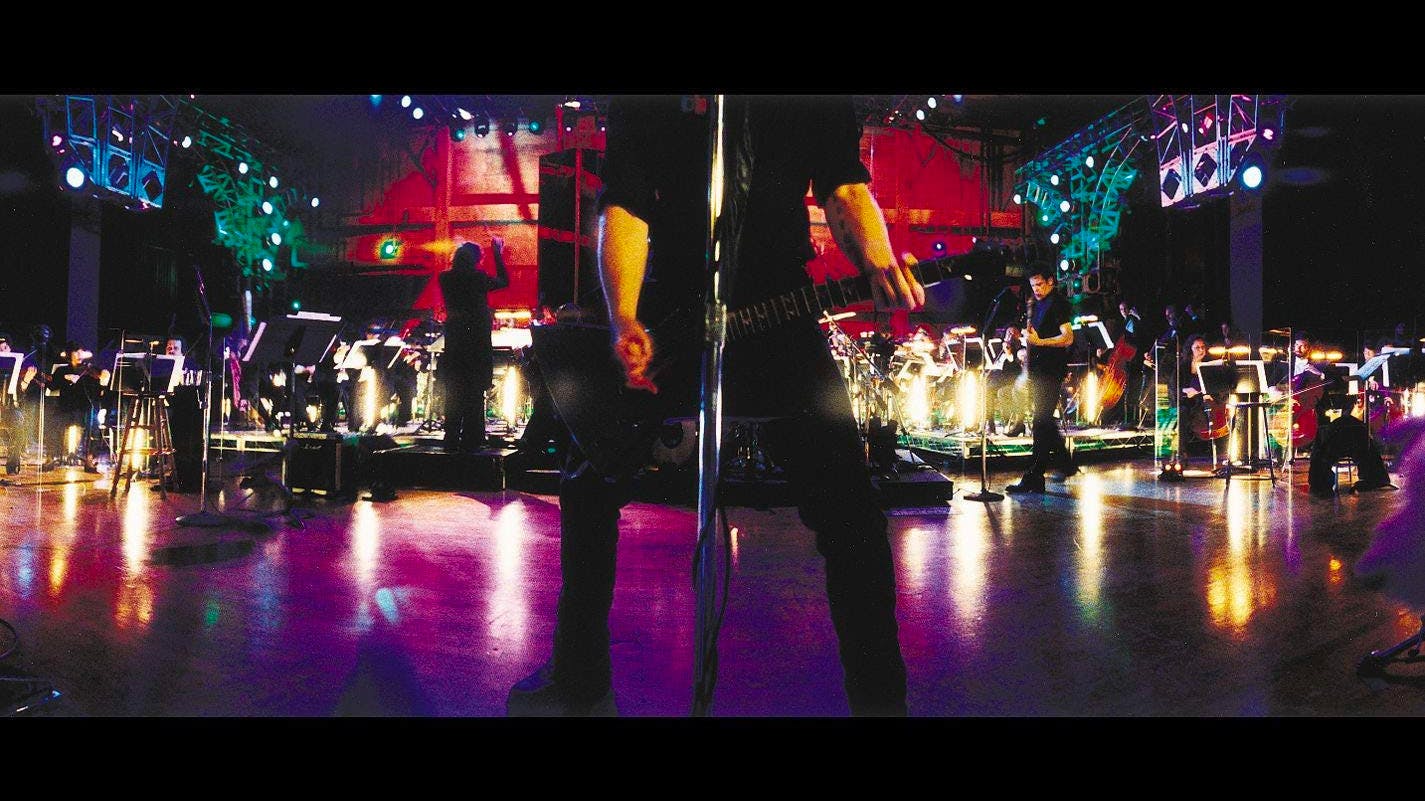“Same time next year, man…”
Has it really been two decades since Lars Ulrich rather meekly croaked out these words as Metallica took their bow at the end of the second of two epic, two-hour shows at Berkeley Community Theatre in California with the San Francisco Symphony orchestra? Even if the use of classical players has become relatively commonplace in the time since – hello Within Temptation, Dimmu Borgir, Nightwish, hell, even Bring Me The Horizon and, of all bands, Entombed, have taken to the stage with orchestras since then – Metallica’s bold experiment set a bar that has not been equalled, much less breached.
To fully get a grip on quite how out of left-field the idea was, one must understand how different things were back then. In 1999, Metallica were comfortably one of the biggest bands in the world, a status they had enjoyed since The Black Album had broken the mainstream wide open for them, but while they sold out whatever enormodome they could find, questions of credibility and identity had begun to raise themselves. While in the ’80s, their stubborn refusal to play by anyone else’s rules extended to not bothering to make videos until they flipped the format on its head with the dark, lengthy clip for One (“What we were doing back then was so different to what was going on at radio and MTV in America we felt, sort of, ‘Why bother?’” scoffed Lars in a 2000 interview), the ’90s found them doing it with regularity. And doing ballads. And not thrashing anymore. And, worst of all, cutting their hair ahead of 1996’s Load album, a record that solidified in many older fans’ minds the band’s change from an angry young band of the people to rockstars with too much money not wanting to shake themselves out of the gilded enclave in which they had found themselves.
But this was stab-in-the-dark territory. Metal bands had flirted with this stuff before, but nobody as big, or on the scale to which Metallica were planning it. The band themselves knew that, even taking into account their classical collaborator Michael Kamen's pedigree with rock music - having worked with artists such as Queen, David Bowie and Pink Floyd, as well as scoring the soundtracks for Die Hard, Highlander and Robin Hood: Prince Of Thieves, and contributing to their own Nothing Else Matters – it was going to be a tough one to get right. Particularly when, for some, the idea was just the latest load of pretentious guff that had included sacking off normal cover artist Pushead in favour of using modern art like Andres Serrano’s Blood And Semen III on the cover of Load (to which it had been rumoured, falsely, that Kirk Hammett had made a ‘contribution’). But at least the band were aware. “I would have showed you one of my fingers if you were to have suggested this back then,” chuckled James Hetfield when asked what the angry 18-year-old him would have made of all this. Lars Ulrich, meanwhile, insisted that, “It’s in keeping with the spirit of Metallica. For many years we’ve tried to push ourselves in different directions as a band, and this represents another challenge and a logical step for us.”
